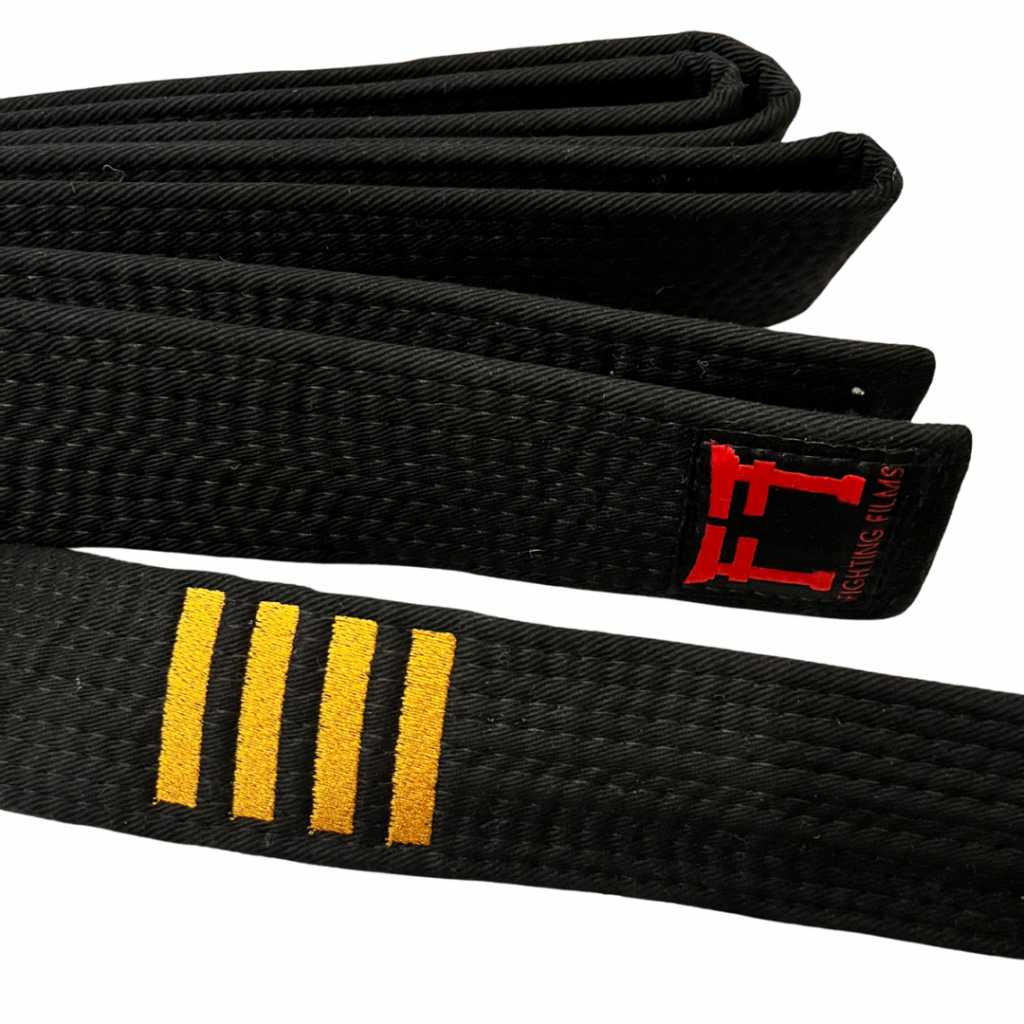The judo belts are much more than a simple accessory. They embody a judoka’s level of skill, commitment and mastery. In this comprehensive guide, we’ll explore the nuances of judo belts from black to 6th to 8th Dan, offering an in-depth look at their significance and importance in the world of judo.
From intermediate to advanced levels of judo mastery
From 1st Dan onwards, judokas enter the black belt category, symbolizing an advanced level of skill. Progression continues until the 5th dan, the last grade before moving on to the white and red belts. To move up to the next dan, you have to pass exams and score points up to 4th dan.
Each higher Dan represents an increasingly higher level of competence. Judokas must demonstrate a thorough understanding of techniques, a mastery of the principles of judo, and an ongoing commitment to the practice and teaching of this martial art.
It is possible to embroider the dans on your judo belt. At Fighting Films we embroider your belt in our store in 15 minutes!
Visit us at 1 rue des Messageries 75010 Paris from 10am to 6pm Monday to Friday and from 1pm to 7pm on Saturday.
6th to 8th dan judo belt
Each Dan has its own symbolic meaning, especially for 6th to 8th dan judo belts.
The 6th Dan, for example, marks a judoka as a technical expert.
The 7th Dan is often associated with technical mastery and significant contribution to the judo community.
Finally, the 8th Dan is generally reserved for those who have made an outstanding contribution to judo worldwide.
Ceinture de judo Fighting Films 6ème à 8ème dan
La ceinture de judo Fighting Films 6ème à 8ème dan est un gage de qualité supérieure. Complétez votre tenue de judoka grâce à cette ceinture qui servira à tous les experts du judo. Ses finitions soignées et sa grande qualité garantissent une grande longévité à votre ceinture de judo rouge et blanche. Le logo Fighting…
Achieving the 6th to 8th dan judo belt grades goes beyond technical competence. Judokas at these levels are often called upon to teach, mentor and guide future generations of judokas. Their role extends beyond the tatami, often involving a commitment to the development of judo on a national and international scale.
Reaching the higher Dan levels does not mark the end of the judo journey, but rather the beginning of a new phase of continuous learning. Top-level judokas continue to train, share their expertise and contribute to the evolution of this dynamic martial art.
By becoming world champion, an athlete can receive a 6th dan belt, demonstrating his or her contribution to judo and technical mastery of this martial art.
The minimum age to receive a 6th dan is 30.




